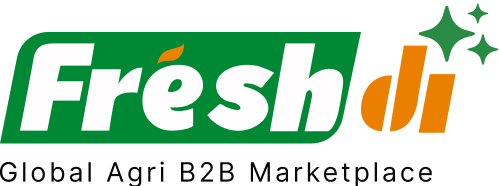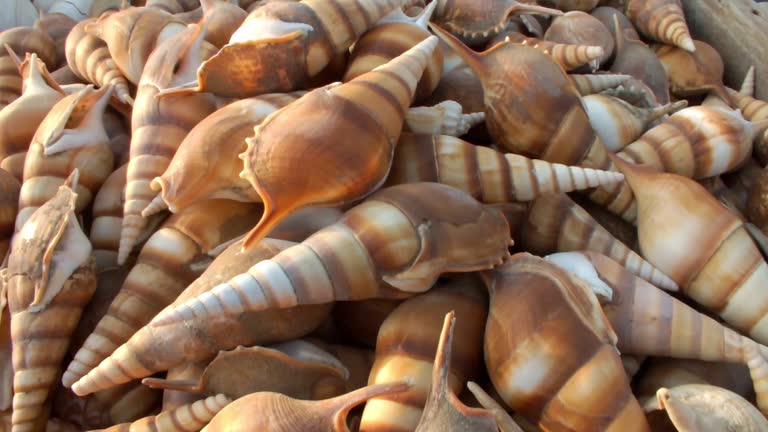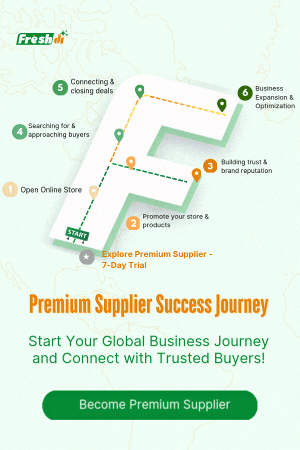Introduction – Current State of Play: The Seashells Sector in United States
The seashells market in the United States is going through one of its most dynamic phases in recent history. As we step into Quarter 3 of 2025, the industry is being reshaped by a combination of global demand shifts, technological innovation, supply chain disruptions, and investment booms. From radioactive contamination concerns to a meteoric rise in frozen shellfish demand, businesses are navigating a constantly changing seabed of challenges and opportunities.
Now more than ever, staying informed isn’t a luxury—it’s a necessity. Companies in the seafood and shellfish ecosystem must stay agile, embrace data-backed decisions, and rethink sourcing strategies. That’s where platforms like Freshdi come in—equipping buyers with verified supplier data, RFQ trend analysis, and real-time market insights.
Let’s dive into the waves currently rocking the U.S. seashell industry, and meet the top suppliers steering through these waters.
Deep Dive – What’s Making Headlines? Key Recent News & Impacts
Surging Demand for Value-Added Shellfish Products
Over 900 new shellfish-based products hit global markets between 2023 and 2024. The U.S. quickly became a hotspot for innovation, with products like frozen chili garlic prawns capturing consumer attention. In fact, those prawns alone racked up over 1.2 million units sold in just six months. This surge signals a clear trend: convenience and flavor are driving consumption.
Supply Chain Shock: Radioactive Contamination Crisis
In a jarring twist, 2025 brought a major hiccup—radioactive contamination (cesium-137) found in shrimp imported from Indonesia. This led to a recall of more than 40,000 frozen shrimp packages. Retailers scrambled, and the event exposed deep vulnerabilities in the global seafood supply chain.
The fallout? Buyers are diversifying sourcing locations, boosting domestic aquaculture reliance, and adopting new tech like AI inspections and blockchain traceability to ensure food safety and supply resilience.
Investment Floodgates Open
Aquaculture is booming. In 2024 alone, over $3.2 billion was invested globally into shellfish infrastructure. The United States attracted over $60 million of private equity into direct-to-consumer shellfish startups, with some handling as many as 220,000 monthly orders. Cold storage, hatchery upgrades, and eco-friendly packaging are top investment targets.
Top 7 Verified Seashells Suppliers in United States – Navigating Current Market Realities
These suppliers have been verified through Freshdi, based on performance metrics like export volumes, customer satisfaction, certifications, and RFQ responsiveness.
1. Ocean Riches
Ocean Riches is known for its premium-grade shellfish and consistent supply chain integrity. With decades of experience, they’ve built a strong domestic and international network. Their traceability systems and eco-certifications make them a standout.
2. Star Dk
Star Dk is a trusted name among seafood importers and distributors. Their flexible sourcing model, especially during the recent contamination crisis, helped clients avoid major disruptions.
3. 5 Star Corp
5 Star Corp has embraced tech-forward practices like blockchain tracking and AI-enhanced quality control. They’re especially strong in frozen assortments and meal-kit-ready shellfish.
4. Better World International
Sustainability is the backbone of Better World International. Their aquaculture farms meet stringent environmental standards, and they’ve recently expanded into value-added marinated shellfish products.
5. The Stone Group, Inc
The Stone Group specializes in institutional supply and bulk exports. Their focus on logistics efficiency has made them a go-to partner for large-scale shellfish procurement in the U.S.
6. J & W Int’l Resources & Supplies LLC
J & W stands out for its agility. During the recent supply chain shake-up, they quickly shifted sourcing strategies and continued to meet buyer demand. Their customer service ratings are among the highest on Freshdi.
7. Aviation Nation LLC
Though newer to the shellfish scene, Aviation Nation has made waves with their direct-to-consumer model and rapid fulfillment capabilities. Their growth trajectory reflects strong market alignment.
Dynamic Ranking Note
Keep in mind that platforms like Freshdi offer monthly and quarterly performance rankings such as “Top Suppliers of the Month.” So while these are the Q3 standouts, fresh names may climb the ranks based on real-time RFQ activity and buyer ratings.
Market Navigation – Strategic Responses to The Current Seashells Landscape in United States
Let’s face it: the seashells market isn’t just about sourcing anymore—it’s about smart, risk-aware decision-making.
1. Diversifying Supplier Geography
With the Indonesian shrimp contamination rattling trust, many buyers are shifting to verified domestic suppliers. This is particularly true for high-volume products like pre-cooked or marinated shellfish, where food safety is paramount.
2. Tech Adoption Is No Longer Optional
Blockchain-backed traceability and AI-based inspections are moving from “nice-to-have” to “must-have.” Suppliers who don’t adapt are being left behind—especially as B2B platforms like Freshdi prioritize listing suppliers with traceability features.
3. Focus on Value-Added Products
Convenient SKUs—like meal kits and frozen ready-to-cook varieties—are where the growth is. Buyers should be scouting suppliers that specialize in these formats to stay relevant in retail and foodservice categories.
4. Regional Variability Matters
States like Florida and California are seeing growth in domestic aquaculture investments, making them hotspots for safer, fresher shellfish sourcing. Expect these regions to play a bigger role in the near-term market.
Conclusion – Key Takeaways for Businesses in a Rapidly Evolving Market
The U.S. seashells market in Q3 2025 is anything but still. With product innovation booming, supply chains being rethought, and investments pouring in, businesses need to act fast and act smart.
Here’s what you need to keep in mind:
- Be proactive about supplier verification—use tools like Freshdi to connect with reliable partners.
- Watch for RFQ trend shifts, especially around product formats and sourcing geographies.
- Embrace tech-forward suppliers who offer traceability and safety assurances.
- Stay nimble—quarterly market conditions are evolving faster than ever.
Checklist for Buyers: Are You Market-Ready?
✅ Verified your current suppliers’ food safety credentials?
✅ Sourcing from multiple regions to reduce risk?
✅ Monitoring RFQ trends on Freshdi?
✅ Pivoting to value-added shellfish SKUs?
✅ Tracking supplier performance via dynamic rankings?
Looking Ahead: Future Outlook for the Seashells Market
As we close out 2025, expect more automation in processing, tighter traceability standards, and a bigger push toward sustainability. Regulatory scrutiny will increase, but so will consumer demand—especially for convenient, clean-label shellfish options.
Platforms like Freshdi will continue to play a vital role, helping buyers stay ahead of the curve with real-time updates, supplier insights, and sourcing intelligence.
References
- Market Growth Reports – Shellfish Market Trends
- Ainvest – Seafood Supply Chain Contamination
FAQs
1. Why is the seashells market in the U.S. so volatile in 2025?
Multiple factors—from health scares to investment booms—have made the market unpredictable. The radioactive shrimp recall especially triggered a major reassessment of sourcing strategies.
2. How can I verify if a seashells supplier is trustworthy?
Use platforms like Freshdi, which vet suppliers based on certifications, buyer reviews, and export performance.
3. Are value-added shellfish products really worth investing in?
Absolutely. Products like frozen, marinated, or ready-to-cook shellfish are seeing massive consumer uptake for their convenience and flavor.
4. What technologies are seashell suppliers using to gain trust?
Blockchain tracking and AI-driven quality checks are becoming standard. These tools help ensure product safety and traceability.
5. What’s the short-term outlook for domestic seashell production?
It’s growing fast, especially in coastal states like Florida and California. Investments in aquaculture are making local sourcing more viable and attractive.


